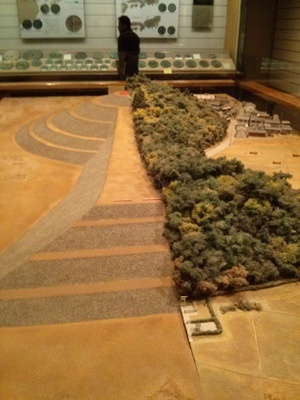Kofun
From SamuraiWiki
Jump to navigationJump to search
A model of Hashihaka kofun, one of the earliest examples of the keyhole-shaped tomb mound, showing both the tree-covered appearance, and the underlying manmade structure. National Museum of Japanese History.
- Japanese: 古墳 (kofun)
Kofun are tomb mounds, erected mainly from the late 3rd century to the early 7th century. Outside of this historical period, the term funkyûbo 墳丘墓 is used instead.
Types of Kofun
- Enpun 円墳 (A circular tomb)
- Houfun 方墳
- Hakkakufun 八角墳
- Chouhoufun 長方墳
- Souhouchuenpun 双方中円墳
- Souhouchuhoufun 双方中方墳
- Zenpôkôenfun (Keyhole shaped tomb) 前方後円墳
- Zenpoukouhoufun 前方後方墳
- Souenfun 双円墳
- Souhoufun 双方墳
Kofun could be entered in generally one of two ways:
- Yokoanakofun 横穴古墳
- A kofun with a side, hall-way like entrance
- Tateanakofun 竪穴古墳
- This style of kofun was entered from above, compared to the Yokoanakofun
References
- Piggott, Joan. The Emergence of Japanese Kingship. Stanford University Press, 1997.